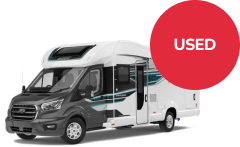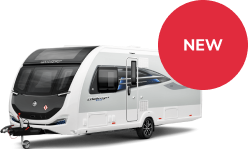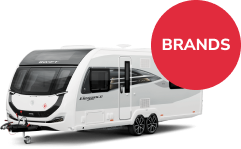Understanding Durability and Longevity Factors
Caravans are a popular choice for holiday travel, offering both freedom and comfort. For potential buyers, one of the most common questions is how long a caravan will last and whether it represents a worthwhile long-term investment. On average, touring caravans have a lifespan of around 14 to 15 years, while static caravans generally last closer to 30 years.
However, the actual lifespan of a caravan can vary significantly. Some touring caravans may remain in good working condition for up to 50 years if they are well-maintained, while others may deteriorate in as little as five years due to poor care or exposure to harsh environments. In the case of static caravans, holiday parks often enforce licence agreements that limit how long a unit can remain onsite, typically between 10 and 20 years, regardless of the caravan’s physical condition.
A range of factors, including build quality, maintenance practices, storage conditions, and usage frequency, play a key role in how long a caravan remains functional and enjoyable to use. With routine servicing, protection from the elements, and prompt repairs, many caravans exceed their expected lifespan.
Understanding the Lifespan of a Caravan
Caravans represent a major financial commitment, and their durability depends on a combination of manufacturing standards, maintenance routines, and environmental exposure. The longevity of a caravan can differ widely between touring and static models, with each having unique considerations.
Definition and Overview
A caravan’s lifespan refers to the period during which it remains structurally sound, safe, and usable for its intended purpose. For touring caravans, the average lifespan is approximately 14 years. However, this figure can be misleading, as some models, particularly those that receive consistent care, can last for decades. Conversely, caravans that are neglected may deteriorate quickly.
Static caravans tend to have longer physical lifespans, often ranging from 15 to 35 years. Despite this, most holiday parks impose licensing restrictions that limit how long a caravan can remain onsite, usually between 10 and 20 years, even if it remains in good condition.
Although 15 years is a widely accepted benchmark for caravan longevity, many owners find that with regular care, their caravans can remain in excellent shape well beyond this timeframe.
Factors Influencing Longevity
The most significant factor in a caravan’s lifespan is its build quality. Higher-end manufacturers typically use superior materials and better construction techniques, resulting in greater resistance to wear and deterioration.
Maintenance is equally important. Regular servicing, seasonal checks, and timely repairs play a crucial role in preserving both the structural integrity and functionality of a caravan. Owners who address minor issues before they escalate tend to enjoy longer-lasting units.
Usage patterns also influence lifespan. Caravans that are used frequently but handled with care often remain in better condition than those subjected to rough handling or left idle for long stretches. Prolonged exposure to moisture, extreme temperatures, and UV radiation can all accelerate a caravan’s decline.
Storage methods are another major consideration. Caravans kept under cover or in dedicated storage facilities typically suffer far less weather-related wear than those left exposed year-round.
Average Lifespan Metrics
The typical lifespan of a caravan depends on its type, how it's used, and how well it’s maintained. In general, both the number of years and the level of wear should be considered when evaluating overall longevity.
By Years
Touring caravans typically last about 14 years, though this figure can vary greatly. A well-maintained caravan may continue functioning for 20 to 50 years, while those that receive minimal care may fall into disrepair in less than a decade.
Static caravans usually have a longer potential lifespan, often ranging from 15 to 35 years. However, this does not mean they can remain on the same site for that entire duration. Holiday parks usually enforce time-based licence agreements, limiting a static caravan’s stay to between 10 and 20 years, regardless of its condition.
By Mileage
For motorhomes and campervans, mileage is an important indicator of wear alongside age. Most reach the end of their optimal service life at around 200,000 miles. Many owners consider this threshold as significant as the 20-year age mark.
Unlike standard vehicles, caravans accumulate mileage more slowly but face greater stress from road vibrations and weather exposure. As a result, key components like the chassis should be inspected regularly, especially beyond 100,000 miles, when structural wear and system degradation are more likely.
Maintenance and Care
Consistent maintenance can extend a caravan’s usable life from the average 14 years to as long as 25 to 35 years. Proper upkeep not only protects your investment but also ensures safety and comfort while travelling.
Regular Servicing
Annual professional servicing is essential for keeping a caravan in good condition. These checks typically include the electrical and gas systems, braking mechanisms, chassis integrity, and general safety features. Most manufacturers recommend servicing every 12 months, ideally before the start of the travel season.
One of the most important elements of a service is damp testing. Detecting water ingress early can prevent one of the most damaging and expensive problems caravans face. Keeping detailed service records also helps maintain resale value and may be required for warranty coverage.
Protective Measures
Protection from the elements plays a major role in prolonging a caravan’s lifespan. Using a high-quality, breathable cover when the caravan is not in use shields it from UV rays, dirt, and moisture.
Preventing damp is especially important. During storage, use dehumidifiers and ensure the caravan is well ventilated. Check seals around windows, doors, and skylights regularly, and replace any that show signs of deterioration.
Tyre care is often overlooked but vital. Even when stationary, tyres can degrade due to UV exposure and age. Rotate the wheels periodically, maintain proper pressure, and replace tyres every five to seven years, even if they appear to have good tread.
Ad Hoc Repairs
Prompt attention to minor issues can prevent costly long-term damage. Small leaks, cracks, or mechanical faults should be addressed immediately. A basic toolkit with sealant, plumbing fittings, fuses, and fasteners is useful for handling simple repairs.
Exterior surfaces require regular care as well. Joints and seams should be re-sealed every two to three years, especially on older caravans. Any signs of rust or corrosion, particularly on metal components, should be treated immediately. While many small repairs are manageable for DIY enthusiasts, complex issues involving gas systems or structural components should always be left to certified professionals.
Material and Construction
A caravan’s construction method and materials have a major influence on its durability. High-quality materials and workmanship often mean fewer repairs and a longer functional life.
Build Quality
Initial construction quality is often the single most important factor in how long a caravan lasts. Reputable manufacturers tend to use better materials and more precise assembly methods, which help maintain structural integrity over time.
Well-built caravans feature tightly sealed joints, robust insulation, and high-strength chassis, particularly important in touring models that endure road vibration and movement. Galvanised steel chassis with reinforced stress points are common in premium models and contribute to extended longevity.
Materials Used
The materials used in both exterior and interior construction affect resistance to wear, moisture, and environmental damage.
Aluminium Cladding:
Lightweight and cost-effective, aluminium is corrosion-resistant when properly maintained. However, it can dent easily and may develop leaks at seams over time.
GRP (Glass Reinforced Plastic):
Durable and water-resistant, GRP holds its appearance longer than aluminium and requires less maintenance. It tends to cost more but offers better long-term performance.
Composite Materials:
Found in higher-end models, these combine strength, insulation, and moisture resistance. They often feature a solid core with protective outer layers, offering enhanced lifespan and thermal efficiency.
Interior materials also matter. Moisture-resistant MDF or plywood is preferable for cabinetry, as particle board deteriorates quickly when exposed to damp. Flooring should be water-resistant and securely bonded to prevent warping or delamination.
Impact of Usage Patterns
How and how often a caravan is used significantly affects its overall lifespan. Both frequency of use and travel conditions influence the rate of wear.
Frequency of Use
Caravans used as full-time residences or for extended travel typically show signs of wear much sooner than those used only occasionally. Systems like plumbing, electrics, and appliances experience more strain with daily use, and fixtures tend to wear faster.
That said, caravans that sit unused for long periods can suffer as well. Seals may dry out, moisture may build up, and mechanical components can seize from lack of use. Proper winterisation, including draining water systems, sealing gaps, and using covers, is essential during long idle periods.
Driving Conditions
Touring caravans driven regularly on rough roads or uneven terrain are more prone to chassis fatigue, suspension issues, and structural wear. Coastal environments expose caravans to salt air, which accelerates corrosion of metal parts. High humidity encourages mould and wood rot, while temperature extremes can cause seals to crack and warp internal surfaces.
Long-distance travel increases exposure to vibration-related stress. The more miles covered annually, the more attention is needed for structural inspections and routine repairs.
Technological Advances
Technological innovations have helped extend the functional lifespan of modern caravans while improving usability, comfort, and energy efficiency.
Modern Design Innovations
Smart systems now allow caravan owners to monitor energy consumption, battery health, and water levels in real time. These features improve efficiency and make maintenance easier.
Solar technology has also advanced. Today’s solar panels are lighter and more efficient, with a typical service life of 25 years or more. These systems support longer off-grid use and reduce reliance on external power sources.
Space-saving innovations, such as convertible furniture, retractable beds, and modular storage, have improved interior layouts. Modern insulation and reverse-cycle climate control systems now allow for comfortable use in all seasons.
Durability Enhancements
Composite materials have replaced traditional wood in many structural areas, offering improved resistance to rot, damp, and pests. Galvanised steel chassis with advanced coatings protect against rust, even in coastal regions.
New-generation sealants and adhesives remain flexible across temperature fluctuations, reducing the risk of cracking and leaks. Computer-aided manufacturing has improved build consistency, minimising defects and enhancing long-term durability.
Environmental and Legal Considerations
Both environmental exposure and regulatory frameworks influence a caravan’s usable lifespan and ownership responsibilities.
Climate Effects
Climate plays a critical role in maintenance needs. Coastal areas subject caravans to salt exposure, which speeds corrosion. Regular washing and protective coatings help mitigate damage.
In humid environments, moisture build-up encourages mould and internal damage. Dehumidifiers and adequate ventilation are essential. In regions with extreme temperatures, expansion and contraction can compromise seals and joints, while UV exposure can degrade plastic components and roofing materials.
Proper winter storage, draining water systems and using protective covers, is vital in cold climates to avoid freeze-related damage.
Regulatory Standards
In the UK, static caravans often fall under specific planning and licensing regulations. Many holiday parks enforce limits on how long caravans can stay onsite, regardless of condition. Some parks apply rules like the “4-year policy,” requiring replacements to meet park standards.
Safety inspections for gas and electrical systems are often required annually, especially for insurance compliance. Local councils may impose regulations related to siting, environmental impact, or seasonal use, particularly in conservation areas.
End of Life Options
When a caravan reaches the end of its usable life, several responsible options are available for disposal or repurposing.
Recycling and Disposal
Specialist facilities can dismantle caravans and recycle parts like aluminium frames, doors, windows, and appliances. These centres usually charge a fee, but this is often lower than landfill costs.
Before disposal, valuable components such as furniture, electrical systems, and fittings can be salvaged and reused or sold. Local councils may also offer guidance or designated collection services for larger vehicles.
Second-Hand Market
Older caravans still attract buyers, particularly those with limited budgets or looking for temporary accommodation, garden offices, or event-use vehicles. Even caravans nearing the end of their main service life can retain 20–30% of their original value if well maintained.
Online platforms like eBay and Gumtree provide good resale exposure. Alternatively, part-exchange arrangements with dealers simplify the process, though resale prices may be lower.
Cost Implications
Understanding the full financial picture of caravan ownership is essential for long-term planning.
Depreciation and Resale Value
Touring caravans typically lose around 20% of their value in the first year, with depreciation slowing after that. Well-maintained models from reputable brands tend to hold value better over time. Keeping service records and making regular updates can positively influence resale price.
Static caravans often retain reasonable value for 10 to 15 years, after which depreciation accelerates, especially if site licence limits are near expiration. Resale tends to peak in spring and early summer, aligning with seasonal demand.
Long-Term Ownership Costs
Annual servicing costs range from £200–£350 for touring caravans and £400–£600 for static models. Insurance premiums typically fall between £200–£500 depending on caravan type and location.
Static site fees are often the largest ongoing cost, varying from £2,000 to £7,000 per year. Storage for touring caravans can cost an additional £300–£600 annually. Travel costs, pitch fees, and utility bills should also be factored into your overall budget.













 Spidersnet
Spidersnet